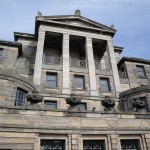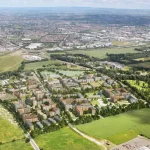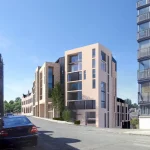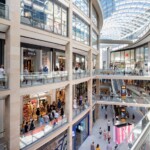Edinburgh Architecture Site, Scottish Capital City Developments Debate, Scotland Architectural News, Reviews
Edinburgh Architecture Site
Development in Scotland’s Capital – a discussion about the major new buildings being proposed.
27 Jan 2009
Edinburgh Architectural Development
The last year has certainly been a turbulent one for the city. At times there were development battles breaking out across the capital like summer fires on a parched heather moor! Clearly those for and against various developments are passionate about Edinburgh, and rightly so. But I would like to clear up any possible misunderstandings about the website. I would also like to set out some personal thoughts on the current status of development in Edinburgh.
Since it was started in 2000 the website has carried texts for and against developments. We aren’t pro-development, nor are we anti-development. The website was designed as a forum (in the original less prescriptive sense of the word), a platform where we report news and people are free to send in images and texts. Like most newspapers and magazines defined opinion is expressed separately. For example historically opinion emerged through the Editorials and latterly through separate online articles.
To give an example, I opposed the deterioration of the former GPO, and said so on the site. The building was becoming an eyesore, with algae, weeds and even a tree growing on it. Another example was the empty former C&A building, looking a disgrace on what should be such an important street. I also highlighted the seediness of upper floors on Princes Street, for example Clinton Cards with tatty boarded-up windows. Of course the council was aware of these problems but what I was doing was emphasising that the situation wasn’t good enough.
When major controversies came up like Shrub Place we asked both sides to contribute. Despite repeated requests to the developer and architect of the initial Shrub Place scheme we only received information from the campaign against, ably led by Harald Tobermann. To casual observers it might have appeared we were anti-development but we simply posted the information provided.
With Caltongate, perhaps the most fierce debate in years, we received little from either side. Save Our Old Town sent some images in December 2005 and then we heard no more. In fact we still have their text and images online and reference to their website, despite a torrent of abuse from them latterly.
With Leith Docks we have carried texts and images for both sides. One week, when we had a news item featuring information from AiA, someone mentioned to me that the website was looking rebellious. But the week after when we carried a release ‘for’ the development someone else might have thought it looked pro-development. Quite frankly people shouldn’t read between the lines, if there’s a debate underway we welcome discussion.
The very first debate we picked up on was Ronaldsons Wharf. Tempers were high following occupation of ‘the last green space in Leith’ and I attended some of the public meetings to try and fathom out what the problems where. Looking forwards to Haymarket, Cowgate and the St James Quarter you can see a familiar story unravelling, the passion that is ignited by proposed change.
But having experienced this passion first-hand re the developments mentioned above it is clear to me it can’t be simplistically reduced to ‘new v old’ or ‘NIMBY’. Each development debate has its own web of intricacies. And although every city has its vigorous debates I wonder whether any have as many as Edinburgh? What is clear to me, and no doubt many others, is that the depths of polarisation aren’t good for the city. Debate is absolutely essential but when it repeatedly descends into vitriol then of course this is not beneficial.
A number of times I’ve referred back to the RIAS Evolution v Conservation ‘Big Debate’. This event pitched people like Richard Murphy against people like Richard Emerson, then head of Historic Scotland. It was the only time in the last eight years that I witnessed so many important figures in the destiny of Edinburgh’s development come together and discuss – with politeness and finesse I might add – ways forward, and to set out their thinking. My keenest memory that I took away from the day was the feeling from both ‘sides’ that they felt they were somehow losing, somehow embattled. Obviously they couldn’t both be right!
This sentiment was backed up by discussions over many years in practice and on the other ‘side’ sitting on the Cockburn Cases Committee and friendship with the then director Martin Hulse. A sense of embattlement can encourage entrenchment. What Martin was good at was very clearly opposing bad development but encouraging the best new development. I have the same sentiment, the absolute key is promotion of hard-to-define ‘quality’ in new buildings and landscaping. Ultimately this issue of ‘quality’ is subjective but has often brought opponents together. In fact a focus on quality would diffuse some of the polarisation as there is fertile common ground here.
Going back to the point about the intricacies of development debates I was tasked with submitting an entry to the Shrub Place competition following the throwing out of the previous planning submission. I made sure I went to speak to the residents, not to appease them or win them over but to spend time with them, listen and learn. This was done over cups of tea and biscuits in their homes. I learnt a great deal. They weren’t anti-development at all, their concerns were much more subtle than that, and they also had specific desires. Not engaging with them would have been a mistake.
I get the strong impression in some of the current development controversies that architects and developers are seen by some as being arrogant, even out of touch, that they don’t care what people think. Hostilities over many years can of course breed entrenchment but those developing sites must open good lines of communication with interested parties, such as local residents.
Sometimes of course there is no easy compromise: I remember the developer of Ronaldsons Wharf trying to assuage those at the public meeting with letting them have a say in the shade of render. But the opponents weren’t interested in that, very clearly they wanted this green space left untouched, they felt that irrespective of who owned it legally, the ‘green lung’ belonged to the community of Leith. The issue was not about height or density but simply ‘do not develop here in any form’. The development of course was built and perhaps it’s this inevitability of developers to ‘win’ eventually that creates such anger amongst those that oppose such moves.
Which brings me on to the issue of civic leadership and control. I am not alone in thinking a strong and fair leadership from the city council in development should avoid many of the endless controversies. We all know the city has to develop but at times it appears too market-driven, too chaotic. A case in point is Meadowbank. Just like the old Edinburgh Royal Infirmary, here is a public building pretty central to the city making it fairly easy to get to by bus or on foot. Moving such civic buildings to the edge of the city makes no sense. It might boost the coffers and solve some short-term fiscal problem but what we need from the city council is robust long-term thinking, policies that benefit the city and its inhabitants.
Property deals should be subservient to the public good. Housing is required and sites can be found for this but there needs to be a rigorous strategic plan for the city that promotes good and accessible civic facilities, from stadia to swimming pools and from libraries to hospitals. Meadowbank Stadium is not the best so years ago there should have been a structured and soundly-financed plan to ‘replace and improve’ rather than not ‘move and reduce’. Having competed on the track and on the pitches there you get a feeling that this tired old building is uncared for by the city council, and furthermore that raising capital via land sales is more important than good access to excellent amenities.
Another sign of weak leadership are empty sites which go on being empty year after year! Edinburgh had the infamous opera house hole for many years, then the drab Greenside Place concrete deck with rebar twigs. Leaving aside what you might think of the latest Haymarket proposals, is a scrubby surface car park a fitting grand entry to the capital from the west? I’ve mentioned the former GPO and former C&A horrors already, and we have the wasteland at Caltongate and Cowgate where approved plans await construction, so quite a legacy of leaving massive gaps in the city for far too long.
This is not an argument to proceed at break-neck pace, but to put in place a system less likely to fail. Development at Haymarket might make a good conversation piece down the pub but is no laughing matter: we’re on our third set of architects here and each one has gone through endless loops wasting both them – AND the city – lots of money. Not only that, empty sites don’t look good for tourists, investors, or us! A site such as Haymarket needs a good set of architects, a good team of planners and effective public consultation. But that shouldn’t take years. And it’s this slowness to make things happen in Edinburgh, compared to say Glasgow, that gives it a pretty bad name amongst developers and architects.
From talking to various senior figures in the world of development over the years I think it would be fair to say that there are endemic failings in the system that are preventing the city evolving in a smooth way. These need to be sorted fast, we shouldn’t rely on personalities. There needs to be a firm structure in place that allows development to move forward more smoothly through the planning process AND more attention to people’s concerns about major new projects.
Adrian Welch, 27 Jan 2009
Comments welcome on this Edinburgh Architecture Site article are welcome. please at info(at)edinburgharchitecture.co.uk
Scottish Capital Building Designs
Contemporary Scottish Capital Property Designs – recent architectural selection below:
SoCo Edinburgh – Cowgate
Leith Western Harbour Docks property developments
, Victoria Park conservation area, Trinity, north of Edinburgh
Design: Holmes Miller Architects
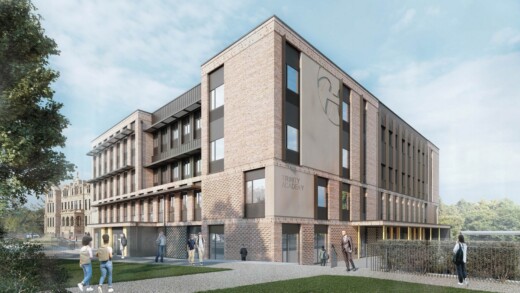
image courtesy of Holmes Miller
Trinity Academy Edinburgh secondary school
Buildings / photos for the Edinburgh Architecture Site Development pages welcome
